1
BiographyJohn Cecil (Jack) Ray was born in Worksop, England in 1911. At the age of 13 his family immigrated to Edmonton, Alberta. Two years later Jack began working, assisting theatre artists. At 19 years of age he started his own business designing displays for exhibitions. He worked for an American theatre circuit, a Broadway producer, Warner Brothers and the burlesque shows of the Minsky brothers.
Patty Conklin met Jack while he was working as a bellhop in a Calgary hotel in the mid-1930s. Jack was hired as a sign painter and soon after began designing show fronts for the Canadian National Exhibition in 1937 and the Conklin road show in 1939.
He opened a studio in Toronto, John C. Ray Studio - Commercial and Industrial Design and worked out of his home on North Linsmore Avenue in the neighbourhood of East York. He supplemented his income by working as a staff artist for the Toronto Star during the winter. He further supplemented his income by producing shows starting in 1944, his first being a posing show where scantily clad girls would pose in front of theatrical setting. One girl in this shows caught his eye; Showgirl Eleanor would one day become Mrs. Jack Ray. He would go on to produce other girl shows, a wildlife show and a Hitler show in 1950.
By 1947, Ray had 10 years of design experience and learned from the challenges of designing for a travelling show as well as the tastes and habits of people. He brought new ideas to the midway, new materials and a full colour palette to produce midway fronts that were seen as modernist.
His work on the permanent show fronts at theCanadian National Exhibition in 1947, were visited by amusement park operators across the continent looking for ideas. He redesigned a number of amusement parks through the 1940s and by the end of the decade was recognized as "having done as much, if not more, than any other in his field to modernize the lure and heighten the money-earning potential of midway shows" (Billboard, Dec. 17, 1949, p. 51).
Jack took on other projects as well. In 1948, he worked with Leon Leonidoff in planning stage settings for the Radio City Music Hall in New York City. In 1953 at the CNE his work expanded from the midway to the grandstand, designing a 30 foot high birthday cake for the 75th anniversary. From 1954 to 1959 Jack designed the Canadian National Exhibition grandstand stage sets for stars such as Danny Kaye, Ed Sullivan and Bob Hope. He even stepped in to run the rehearsals for a variety show in 1954 when Jack Arthur, the producer, became ill.
Given his experience and connections, it was natural for Ray to get into the amusement park business himself. After opening a California office for his design business in 1953 he moved to La Jolla, California. In 1954 Jack and James T. Mitchell leased Mission Beach Amusement Park in San Diego. The name was changed to Belmont Park, as a tribute to the park in Montreal. "He had always wanted an experimental workshop where new park ideas and operations may be carried out". (Billboard, Mar. 27, 1954, p. 52).
Jack gave back to his community. He was a member of the Showmen's League of America and a member of the National Showman's Association. He sat on the board of the National Association of Amusement Parks, Pools and Beaches in 1957 and was the Vice President of the International Association of Amusement Parks in 1963.
His design work would culminate in 1962 with the "Gayway" amusement zone for the Century 21 Exposition, Seattle World's Fair. Almost ten million people visited the fair, making the "Gayway" the most commercially successful World's Fair midway ever.
The show world was shocked to hear of Jack's death December 29, 1963, of a heart attack following surgery. He was only 52. Obituaries appeared in trade show literature like Amusement Business and newspapers such as the New York Times. He was survived by his widow, Eleanor, a daughter, Mrs. Eleanor Ray Bailey, a son, Robert, and four grandchildren.
He was posthumously inducted into the International Association of Amusement Parks and Attractions Hall of Fame in 2000.
2
Banner used in a North American Carnival Museum and Archives exhibit about Jack Ray.15 June 2010
North American Carnival Museum and Archives "Congress of Wonders" museum tent, Carnivale Lune Bleue, Bromont, Quebec, Canada
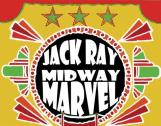 Credits:
Credits:North American Carnival Museum and Archives (NACMA)
Cailee Goulden
Pascale Dupré
3
Artist and midway designer Jack C. Ray.Circa 1937
Unknown
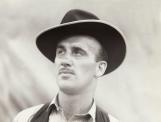 Credits:
Credits:North American Carnival Museum and Archives (NACMA)
4
James Conklin on how Jack Ray got started in the business.25 April 2011
Not applicable
 Credits:
Credits:North American Carnival Museum and Archives (NACMA)
James Conklin
Glenn Charron
5
Jack Breaks into the BizTo take advantage of the opportunities offered by Patty, Jack relocated to Toronto where he worked on designs for Conklin Shows. He also opened his own commercial design studio out of his home on North Linsmore Avenue in the neighbourhood of East York, and supplemented his income by working as a staff artist for the Toronto Star.
Jack described his first few years working for Conklin Shows by saying he learned "not only the difficulties of tearing-down, setting-up and maintenance, but the tastes and habits of people - what compelled their attention and how they moved around the midway".
So in 1937, when Patty Conklin won a contract to provide the Canadian National Exhibition (CNE) with a midway amusement area complete with rides and shows, Jack was ready for the challenge!
6
Jack Ray's Toronto business card.1937-1952
335 North Lindsmore Cres., Toronto, Ontario, Canada
 Credits:
Credits:John C. (Jack) Ray
North American Carnival Museum and Archives (NACMA)
Jennifer Walker
7
Toronto Star building where Jack worked as a staff artist early in his career.Circa 1940
Toronto Star Building, Toronto, Ontario, Canada
 Credits:
Credits:City of Toronto Archives, Series 1057, Item 842
8
A Bold New Look for the Canadian National ExhibitionDiscarding the traditional designs for show fronts, Jack wowed everyone with his use of new materials and a full colour palette to give the Canadian National Exhibition midway a modern look. His designs were strongly influenced by Art Deco style; making use of sharp simplistic lines and geometric shapes, using bright, rich colours and repetitive motifs to streamline his designs.
"You might say there are 3 basic elements that set the mood of the carnival customer: colour, light and music. When you have a perfect combination of all 3 the carnival will be a success."
- Patty Conklin (owner/operator Conklin Shows)
Jack used Patty's advice in his designs for the Canadian National Exhibition. Show fronts for "The Great Omi" and "Ernie & Len" with their bold architectural lines and bright colours, attracted large crowds. Patty furthered Jack's exposure by encouraging him to work for a business associate, the owner of the Palisades Park in New Jersey. For the next 25 years, the Palisades could boast the work of Jack Ray.
9
Princes' Gate entrance to the Canadian National Exhibition.1927
Canadian National Exhibition, Toronto, Ontario, Canada
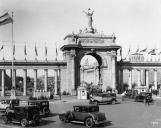 Credits:
Credits:Canadian National Exhibition Association
10
Gate designed by Jack Ray seen in front of a double Ferris wheel.1937-1941
Unknown
 Credits:
Credits:North American Carnival Museum and Archives (NACMA)
11
Main gate at the Canadian National Exhibition, designed by Jack Ray.1937-1941
Canadian National Exhibition, Toronto, Ontario, Canada
 Credits:
Credits:North American Carnival Museum and Archives (NACMA)
12
One of Jack Ray's carnival entrance gates.1937-1946
Conklin Shows
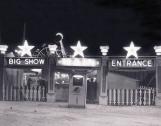 Credits:
Credits:North American Carnival Museum and Archives (NACMA)
Jennifer Walker
13
Main entrance gate to a carnival, designed by Jack Ray.1937-1946
Conklin Shows
 Credits:
Credits:North American Carnival Museum and Archives (NACMA)
14
"Globe of Death" show at the Canadian National Exhibition designed by Jack Ray.1941
Canadian National Exhibition, Toronto, Ontario, Canada
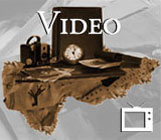 Credits:
Credits:North American Carnival Museum and Archives (NACMA)
J.W. (Patty) Conklin
Glenn Charron